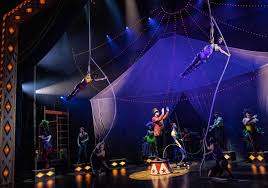
A bestselling book and a major movie have now been transformed into a wildly inventive Broadway musical. Circus aficionados step right up. Water For Elephants is stunningly well told, visually enthralling and jam packed with excellent performers of both the circus and musical theater varieties.
Sara Gruen’s book is well known. A young man flees his family trauma and hooks up with a failing traveling circus struggling mightily during the depths of the Great Depression. His veterinarian skills will be put to the test. An aged narrator looks back on his life story. Throw in a love triangle, a sadistic ringleader and a slew of memorable characters. This show is a sumptuous feast for the senses.
An extraordinary scene early on features Marlena comforting her prized horse Silver Star. The horse (and all the animals) are presented in the form of puppets, sometimes in representative pieces. This horse is injured and weak from being overworked. Marlena sings “Easy” to soothe her circus act star as only she knows how.
The imagery begins simply and becomes wonderfully evocative. You believe her, the horse and the pain. Then the emotion is added. The horse, or more precisely a performer (Antoine Boissereau), takes flight in an elegant Spanish Web spectacle using dangling white fabric. The aerial dance is beautiful and you can imagine the horse flying with joy though suffering through injury. As Marlena sings and pets what is essentially a head on a stick, remarkable theater magic is created. The whole show contains multitudes of images which astonish and, even more excitingly, propel the story and its underlying emotions and tensions.
Director Jessica Stone (Kimberly Akimbo) deftly balances the awe-inspiring circus feats against a narrative which occurs both in the present and in the past. Jesse Robb and Shana Carroll’s choreography is impressively athletic and more vividly airborne than any other show on Broadway. Takeshi Kata’s scenic design includes the improbable live raising of a big top tent. The visual details of the entire creative team merge seamlessly and are smile inducing and jaw dropping in equal measure.
Darkness underlying this tale also takes center stage allowing the dramatic intensity to never fall away amidst the eye-popping splendor. Circus owner Augustus boldly inhabits his two faces as grinning ringleader and evil tormenter. Paul Alexander Nolan (Escape from Margaritaville, Jesus Christ Superstar) is devastatingly good in the role. We are asked to hate him but there is also an ability to recognize the pressures that made the man who he is.
Grant Gustin and Isabelle McCalla conjour slow burn chemistry that we and the entire circus company can see. There is no hiding from this love story despite her marriage to Augustus. Both of these actors shine. Mr. Gustin’s Jacob Jenkowski is likable and appropriately naive. Ms. McCalla is delicately touching but equally adept at navigating her fraught situation between choosing real love and managing a dangerous husband.
The circus characters are well developed personas given ample stage time for us to know and care about them. Stan Brown, in his Broadway debut at age 61, is superb as Camel, the hard drinking, long-time employee at the end of his career. Joe DePaul’s Walter is the dog owning clown with a big chip on his shoulder and is very funny indeed. Wade McCollum is exceptionally fine as the menacing henchman who gets his hands dirty and does Augustus’ bidding.
Theater veteran Gregg Edelman (City of Angels) is the elder Mr. Jankowski and he effortlessly and winningly tells his fascinating tale during an extended break from a nursing home prison. Marissa Rosen’s Sue is one of the most memorable Kinkers as the circus performers are known. The entire company, however, should be commended for an exceptionally fine display of acrobatics, musical theater song and dance, and tightly orchestrated yet seemingly fluid storytelling.
Much credit has to be given to Rick Elice’s book which clearly articulates the story and allows for so many excellent individual characterizations. Time period and carnival appropriate music and lyrics are by Pigpen Theatre Co. Their marvelously inventive 2012 Off-Broadway show The Old Man and the Old Moon is the reason I was inspired to see this show in a month of so many options.
And what about Rosie the elephant? She’s colossal in everyway imaginable with her five human helpers. For those of you who know how this one ends, prepare yourselves to be wildly impressed. Hop on the circus train to savor this underbelly slice of Americana; enjoy the nostalgia and marvel at the stagecraft. Water For Elephants is a wonder.

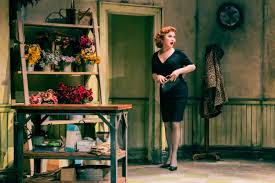
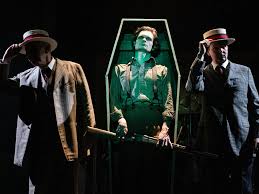


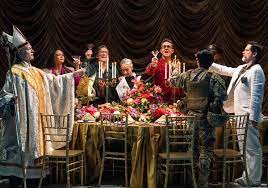
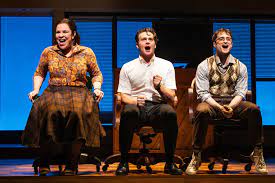

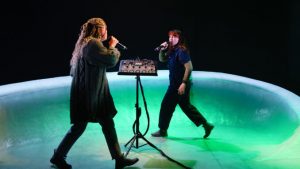
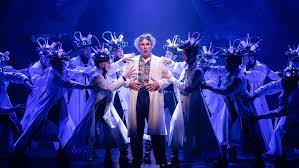
You must be logged in to post a comment.